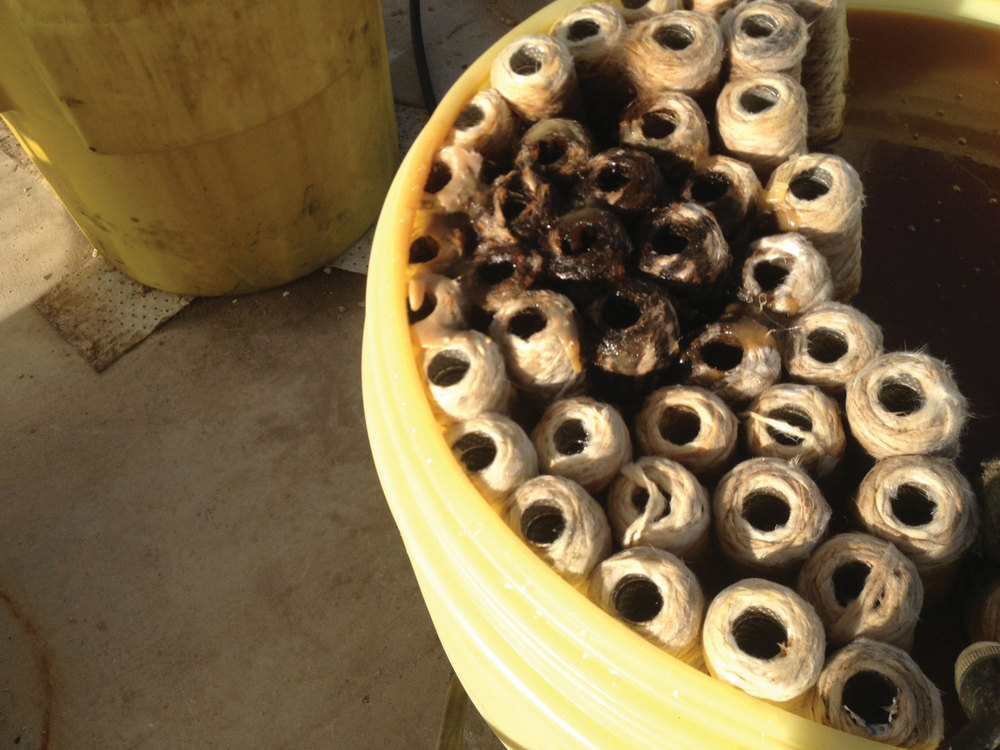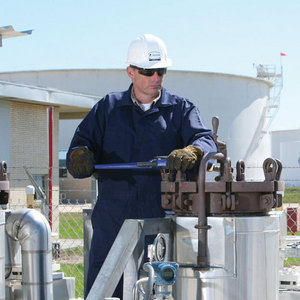Reducing Risk of Spontaneous Combustion






PHOTO: TEXON LP
November 11, 2014
BY Rob Fransham and Jon Van Gerpen
Biodiesel-coated materials can, in rare circumstances, spontaneously ignite causing damage both large and small. Much information on this phenomenon is available, including in Biodiesel Magazine archives. The mechanisms of biodiesel spontaneous combustion are not completely understood, which is why it is one of the subjects that the University of Idaho has researched for the USDA.
Spontaneous combustion occurs when heat, resulting from chemical or biological reactions, accumulates in loosely piled flammable materials. The resulting rise in temperature accelerates the reaction rate, which further increases the temperature, culminating in smoke and open flame. Biodiesel feedstocks with at least two double bonds in their carbon chains are particularly susceptible to oxidative reactions and are a greater risk than petroleum-based fuels, which have almost no double bonds in their structures. In addition to an oxidation-prone fuel, spontaneous combustion requires that the fuel have access to sufficient air to oxidize the fuel but not too much air circulation, which could cause the heat of reaction to be dissipated. This situation frequently involves fuel-soaked rags or filter media.
Advertisement
Plant operators and biodiesel transporters are encouraged to use good housekeeping practices to lessen the risk of a fire. A solution recommended by many is to store biodiesel-contaminated absorbent materials under water in a closed container. That solution, in Texon’s experience, is only temporary because eventually the biodiesel-coated material is removed from the container and when the water evaporates the biodiesel is again exposed to air.
At its biodiesel terminal site in Houston, Texon uses spun fiberglass cartridge filters in the biodiesel truck offloading system to protect the system from debris. After those filters accumulate contaminants they are removed and drained and stored in a waste receptacle. Texon’s recent experience was that, when exposed to the Houston summer heat without water submersion, a portion of the used filter elements could heat up enough to create visible smoke and some melting of the plastic container. Even with water submersion, in our experience, similar heat damage could occur as quickly as 24 hours after the filters were removed from the water bath.
A simple solution was employed at Texon’s site that has reduced its risk of spontaneous combustion, at a reasonable cost. Used filter elements were first submerged in a motor oil bath for a few minutes, and then allowed to drain before placing in the waste container. To ensure that there was no spontaneous combustion, the oil-treated filters were monitored for two weeks before they were released for disposal. Apparently, the biodiesel is leached from the filter elements into the motor oil and is replaced by the oil itself, which is much more oxidatively stable. Motor oil consists mostly of saturated hydrocarbon molecules with large amounts of antioxidants that serve to slow the degradation of the oil as it lubricates the engine. This lack of double bonds and the presence of antioxidants slows the heat production process so that natural dissipation of the heat of reaction lowers the ability to reach combustion temperatures.
Advertisement
A motor oil-wetted filter is easily recycled by the oil filter recycling industry, allowing for safe and efficient disposal. Eventually, the motor oil bath accumulates enough biodiesel contamination that Texon disposes of the oil via the waste fuels industry. The risk of spontaneous combustion in this specific situation was reduced by a simple and safe technique. We believe that this approach can be used in many other situations to reduce biodiesel handling risks. Of course, every plant or terminal operator should evaluate its own risks and determine its own best practices based on its unique circumstances and conditions.
An industry that shares safety best practices among themselves makes everyone better able to protect their employees, the communities within which we operate, and the industry itself. The authors present this safety tip with that principle in mind.
Authors: Rob Fransham, Jon Van Gerpen
Renewable Fuels General Manager, Texon LP
Associate Dean for Research, College of Engineering, University of Idaho
rfransham@texonlp.com
jonvg@uidaho.edu
Related Stories
Biodiesel capacity in the U.S. and Canada dipped slightly stable in 2024, with several renewable diesel producers reporting headwinds and lower margins alongside a drove of SAF projects in various stages of development.
The IEA’s Task 39 group has new research regarding the development and status of the sustainable aviation fuel industry.
Montana Renewables LLC has delivered its first shipment of 7,000 gallons of SAF to Dearborn, Michigan's Buckeye Pipeline facility. From there, the fuel will be transported to the Detroit Metropolitan Airport via pipeline for use by Delta Air Lines.
NYC took a monumental step towards clean air and a sustainable future on Jan. 11 with the grand opening of the city's first retail fuel station dispensing renewable diesel. The project is a collaboration between Sprague and Sonomax.
The USDA on Jan. 11 awarded $19 million under the Higher Blend Infrastructure Incentive Program. The grants will support projects in 22 states to expand the availability of higher ethanol and biodiesel blends.
Upcoming Events










